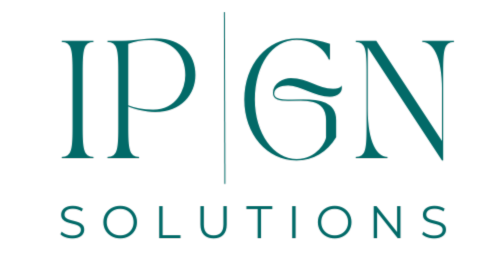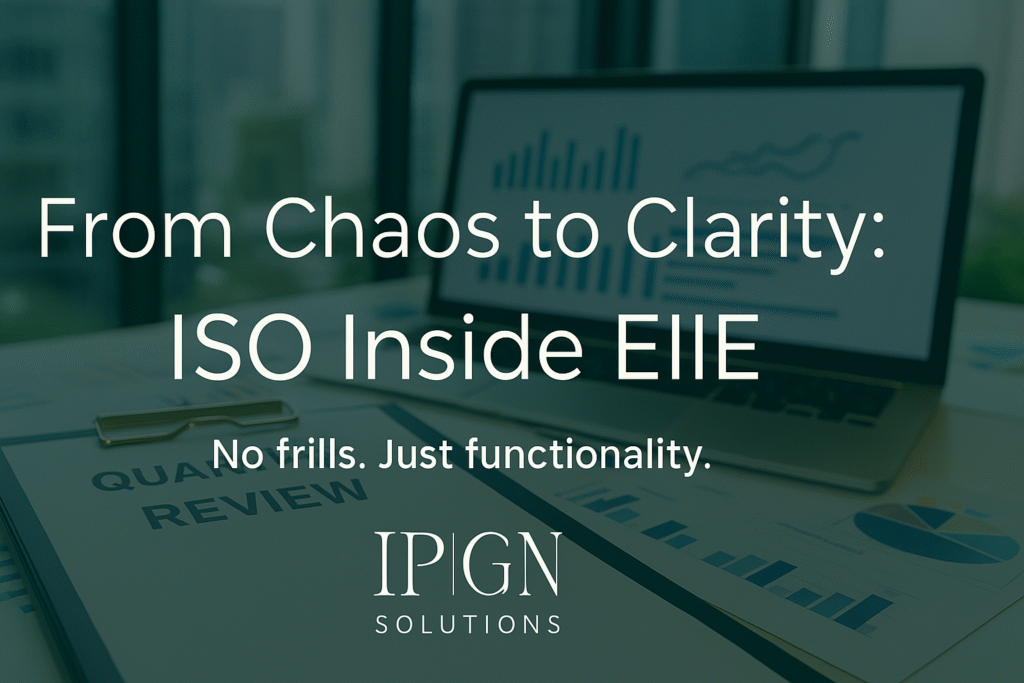When people ask why we left our jobs to build our own software start-up, one of my answers is simple: so we could fix things properly. Too often we saw broken systems, particularly around ISO standards, being handled in ways that caused more chaos than clarity.
One classic example? Quarterly Management Reviews (QMRs).
Risk analysis, lessons learned, KPIs… all part of ISO 9001:2015. And yet, one of the clauses most businesses either forget about or leave until lastminute.com.
The worst offender? Customer feedback. Collecting it is one thing. Using it to actually improve the business is another. And when you’re buried in day-to-day demands, a structured review can feel like a luxury.
So what did we do differently?
We built ISO principles straight into EIIE. Not just for ourselves, but so our customers could build better habits without having to think too hard about it
Lessons Learned (No, really.)
Everyone promises to reflect on failures. Few actually do. And even fewer capture the details that matter.
That’s why in EIIE, whenever a user logs a win or loss, they can tag reasons and add comments. Management can then see patterns behind lost deals, not just gut feel.
The same approach runs through project execution too: information captured, analysed, retained as knowledge, and applied next time. That’s lessons learned, in action.
Quarterly Reviews & KPI Tracking
Now let’s talk about my personal pet peeve — QMS reviews.
Every quarter, the same scramble begins:
- “Where did we write down the goals — was it in this presentation?”
- “Did we actually align the objectives with the KPIs?”
- “Where’s the data on…?”
- “Who was supposed to update the spreadsheet?”
So we thought: let’s just build it in.
In EIIE, we created a module where:
- Businesses can list Objectives, Priorities, and Strategies in one place — visible to everyone, not just the senior team.
- A Metrics page shows key KPIs (or OBIs, KRIs… whatever you call them), so you can keep a pulse on performance.
- Indicators can be tailored to your business needs — customise them yourself.
Can this be improved? Of course.
But is it enough to cover 90% of what businesses actually need in a simple, no-fuss way? Absolutely.
Our motto: Simplicity is the key.
It’s why our software is built with no frills, just functionality.
And the best part? All the relevant management tasks are in one place — open, transparent, and no more chasing ten folders and four spreadsheets.
AI-Powered Document Agent (Yes, really.)
Now for something a little more exciting.
Yes, we created user documentation: instructions, glossaries, FAQs. Standard stuff. But then we asked: what if the AI could read it for you?
So, we trained our EIIE HAMI Agent on our documentation. Now, when a customer asks a question, the Agent answers based on our actual materials, no guesswork.
We also ran an experiment:
We fed customer documentation into the system. Then we asked questions like:
“What’s the testing pressure for the H4 according to the API standard?”
And guess what — the Agent gave the answer, plus the relevant clause from the standard.
Now imagine your employees asking:
“What’s the procedure for taking additional holiday?”
“What are my responsibilities in Project X?”
And instead of digging through 80 PDFs and outdated manuals, they just get the answer.
That’s the future of the QMS.
ISO in Real Life, Not Just for Audits
Let’s be honest, most software helps you tick some ISO 9001:2015 boxes. Few touch the softer stuff – the habits that make compliance real, not just “audit-ready.”
We’ve lived the pain of chasing evidence: half-finished PowerPoints, buried spreadsheets, promises to auditors. So we thought: why not build it into the system itself?
That’s what we’ve done with EIIE. ISO made practical, not painful.
Curious how else EIIE supports ISO compliance — or how your business can do the same? Drop me a message. We’d be happy to show you.





